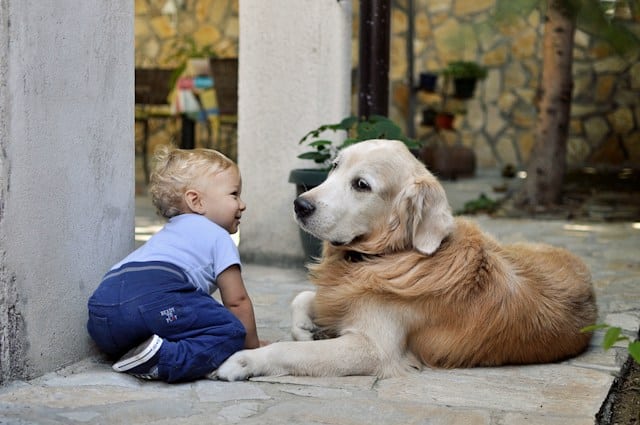How to introduce a new dog to your children?

Welcoming a new dog into your family is an exciting adventure, especially for your children. Dogs are not just pets; they become vital members of the family, offering companionship, love, and joy. However, the process of introducing your new canine friend to your kids is crucial and should be approached with care and planning. A smooth introduction can help forge a strong and positive relationship between your children and the dog, which is why understanding the right steps to take is essential. Let’s explore how you can ensure that the introduction of your new dog to your children is a happy and safe experience for everyone involved.
Preparing Your Family for the Arrival
Before your pup even steps paw into your home, it’s vital to prepare your family, particularly your children, for the new arrival. The preparation stage sets the tone for the initial meeting and helps your kids understand the responsibility and changes that come with having a dog.
A voir aussi : Can cats and dogs live together peacefully?
Start by holding a family meeting to discuss the expectations and rules regarding the new dog. Explain to your children the importance of respecting the dog’s space and possessions, such as their food bowl and sleeping area. Use images and books to show the kids how to properly interact with dogs, emphasizing gentle behavior and respect for the animal’s body language.
In addition to the behavioral guidelines, involve your kids in getting the house ready. Assign age-appropriate tasks such as picking out a bed or toys for the dog. This step not only helps your children feel involved but also teaches them about the care and needs of the dog.
A lire également : How to ensure your pet stays hydrated in summer?
Introducing Your Dog to Your Child
The initial introduction is a pivotal moment. You will want to ensure that both your dog and children are comfortable and that the meeting is controlled and positive. Choose a neutral area for the first meeting, ideally outside where the dog has space to move freely.
Keep the dog on a leash and allow your child to approach slowly and calmly. Show your child how to offer their hand for the dog to sniff, teaching them the dog’s way of getting to know someone. Monitor the dog’s body language closely for signs of stress or discomfort. If the dog seems relaxed, your child can gently pet the dog under your supervision. Remember, patience is key. This initial introduction may take time, and it’s important to go at a pace comfortable for both the dog and your child.
Establishing Rules and Boundaries
Rules and boundaries are essential for creating a safe environment for your children and the dog. Once your dog has settled in, it’s time to teach your children the house rules concerning the dog. Consistency is vital, so ensure everyone in the family is on the same page.
For instance, if the dog is not allowed on the furniture, your children should uphold this rule. Similarly, explain to your children that they should not disturb the dog while it’s eating or sleeping. Teaching your children to recognize and respect the dog’s body language can prevent misunderstandings and ensure that your dog does not feel overwhelmed or threatened.
Training Your Dog with Your Kids
Training is a crucial step in creating harmony between your dog and children. Involving your kids in the dog training process can be a rewarding experience, fostering communication and mutual respect. Choose dog training methods that are positive and encourage your children to participate by giving commands and rewarding the dog for good behavior.
Establish a routine for your dog and involve your kids in the caregiving tasks, such as feeding, walking, and grooming. This involvement helps your children learn responsibility and gives them a sense of ownership in the dog’s well-being. It’s also an excellent way for your dog to build trust with each member of the family.
Building a Lasting Relationship
The ultimate goal is to build a lasting, loving relationship between your dog and children. Spend quality time together with activities that both the dog and your kids can enjoy, like playing fetch or going on family walks. Encourage your children to be involved in all aspects of the dog’s life, from exercise to vet visits.
Celebrate the milestones and progress your dog makes with your family, reinforcing the bond between your children and the pup. Remember to capture these moments with photos and create lasting memories. With time, patience, and care, your children and your dog can develop an unbreakable bond that enriches the lives of everyone in the family.
Conclusion
Introducing a dog to your children can be a delightful and enriching experience for your family. Preparation, patience, and positive reinforcement are the cornerstones of a successful introduction. Remember to prepare your family for the new arrival, introduce your dog to your children carefully, establish clear rules and boundaries, involve your kids in training, and nurture the relationship between them. By following these steps, you can help ensure a smooth transition for your new dog into the family and foster a loving and lasting relationship with your children.
